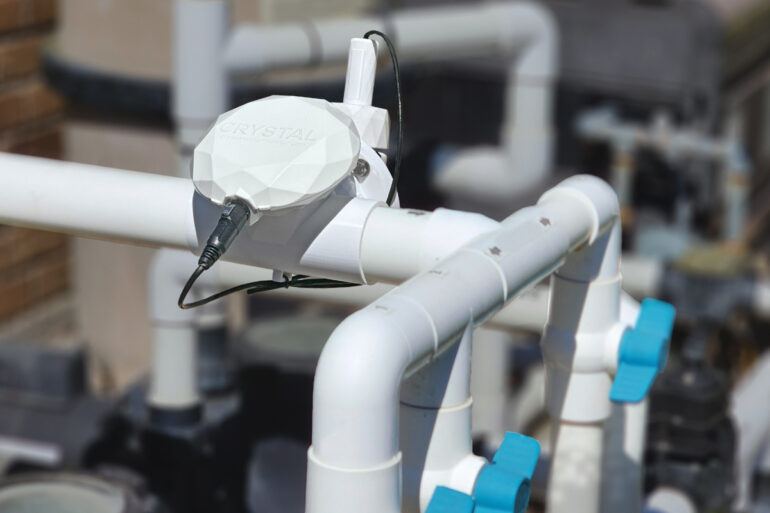An Ounce of Prevention
Why pool service pros should be offering routine Legionella testing

Adding Legionella testing to your list of pool services can not only create another revenue stream for your business but also help save customers’ lives.
Legionnaires’ disease is a type of lung infection caused by inhaling small water droplets that contain the bacteria Legionella. Private and commercial pools could be putting swimmers at risk of contracting this disease when routine cleaning and water testing are neglected.
James Dyer is CEO of Genemis Laboratories of America, Inc., a company that distributes water testing for bacteria and free chlorine. He’s a former pool builder in the Washington, D.C. area and a proponent of frequent water testing in the pool industry.
“You can die from it,” Dyer says, recalling a test he did in Texas for a retirement community with an indoor pool that had Legionella contamination on multiple occasions and resulted in infections for at least four residents.
He advises pool pros who are unfamiliar with how to test for Legionella to learn more about it through any means available — from calling their local health department to doing research online — and implement test kits as soon as possible.
“If I were in business today, I would have my home service routes do a test once per month and charge for that test,” Dyer says. “People are more interested about health today due to COVID than ever before.”
Legionella is a bacteria that occurs naturally in freshwater environments, but it can become a lurking health hazard in pools, hot tubs, fountains and other man-made water systems where the bacteria can stay hidden in biofilm and stagnant water, allowing it to spread.
Legionella was discovered, and subsequently named, in 1976 after an infamous Legionnaires’ disease outbreak among attendees at an American Legion convention in Philadelphia.
It wasn’t until that year that public health officials were able to show Legionella causes both Legionnaires’ disease and Pontiac Fever, a less serious disease that can result in fever and muscle aches.
Health departments reported nearly 10,000 cases of Legionnaires’ disease in the U.S. in 2018, according to the Centers for Disease Control and Prevention. But a recent CDC study estimated the true number of Legionnaires’ disease cases could be 1.8–2.7 times higher than reported.
About one out of every 10 people who contract Legionnaires’ disease will die due to complications, and for those who get Legionnaires’ disease during a stay in a healthcare facility, about one out of every four will die.
“Over the last decade, recreational waterborne infections associated with swimming pools have been at an all-time high,” says Kelly Reynolds, University of Arizona professor at the College of Public Health.
In a 2019 article for “Water Conditioning and Purification International Magazine,” Reynolds writes that while most recreational waterborne infection outbreaks occur in hotel pools and spas, the venues associated with the highest level of closures were child-friendly pools, followed by hotel/motel and apartment/condominium pools.
Legionella outbreaks are increasing at a rate of 14% per year; between 2000-2014, cases increased 286%, Reynolds says. The reason for this increase may be due to heightened awareness of the bacteria but also because of increases in the populations of people who are more susceptible to this kind of infection, like the elderly and people who smoke or have weakened immune systems, Reynolds adds.
The bacteria thrive in wet conditions where temperatures are between 90-108 degrees Fahrenheit and other microorganisms are present, according to a 2017 factsheet from the Pool & Hot Tub Alliance.
A pool that is not consistently cleaned and tested for proper chemical levels can easily turn into a biofilm soup, filled with weakened chemicals, bodily fluids, personal care products and other debris. Simmer that mixture at a warmer temperature, and Legionella will be living its best life.
Biofilm’s slimy, protective layer also makes it easier for Legionella to withstand typical doses of chlorine or bromine, so relying on normal levels of these chemicals to treat it isn’t enough after biofilm has started colonizing.
Each year, it grown more and more and more. The swimming pool industry does not know how important it is just to run a test at least once a month for your homeowners. Testing is a necessity. If it saves just ones person, then you are doing a good deed.” James Dyer, Genemis Laboratories of America, Inc.
Pool service pros who want to learn more about testing or treating Legionella can start by enrolling in online classes offered by Environmental Health Services as well as other online courses offered through the CDC. Dyer suggests also reaching out to local health departments and universities that may offer training in water management and Legionella prevention. The PHTA also offers a variety of online courses about disinfection, filtration, testing and more.
Pool service pros don’t have to be the ones to treat it but identifying it and pointing pool owners to remediation professionals goes a long way in preventing Legionellosis infections. Dyer reminds pool pros that while testing can add another revenue stream, it’s a preventative service that their health-conscious customers will appreciate if they’re not already aware of its dangers.
“Each year, it grows more and more and more,” Dyer says. “The swimming pool industry does not know how important it is just to run a test at least once a month for your homeowners. Testing is a necessity. If it saves just one person, then you are doing a good deed.”






